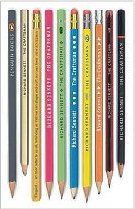Naming things seems relatively unproblematic until you try to do it — ask any couple with a baby on the way. Naming files is no easier.
Earlier today Fiona @lovefibre was using the MAC OS Time Machine to retrieve an old version of a file (let’s call it “fisfile.doc”). She wanted to extract a part that she knew she had deleted in order to use in the current version. Of course the file you are retrieving has the same name as the current file, and the default is to overwrite the current version; that is a simple backup restore. However, you can ask Time Machine to retain both versions; at which point you end up with two files called, for example, “fisfile.doc” and “fisfile-original.doc”. In this case ‘original’ means ‘the most recent version’ and the unlabelled one is the old version you have just restored. This was not too confusing, but personally I would have been tempted to call the restored file something like “fisfile-2010-01-17-10-33.doc”, in particular because one wonders what will happen if you try to restore several copies of the same file to work on, for example, to work out when an error slipped into a document.
OK, just an single incident, but only a few minutes later I had another example of problematic naming.



